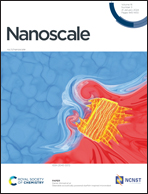Near-room temperature ferromagnetism and a tunable anomalous Hall effect in atomically thin Fe4CoGeTe2†
Abstract
Itinerant ferromagnetism at room temperature is a key factor for spin transport and manipulation. Here, we report the realization of near-room temperature itinerant ferromagnetism in Co doped Fe5GeTe2 thin flakes. The ferromagnetic transition temperature TC (∼323 K–337 K) is almost unchanged when the thickness is as low as 12 nm and is still about 284 K at 2 nm (bilayer thickness). Theoretical calculations further indicate that the ferromagnetism persists in monolayer Fe4CoGeTe2. In addition to the robust ferromagnetism down to the ultrathin limit, Fe4CoGeTe2 exhibits an unusual temperature- and thickness-dependent intrinsic anomalous Hall effect. We propose that it could be ascribed to the dependence of the band structure on thickness that changes the Berry curvature near the Fermi energy level subtly. The near-room temperature ferromagnetism and tunable anomalous Hall effect in atomically thin Fe4CoGeTe2 provide opportunities to understand the exotic transport properties of two-dimensional van der Waals magnetic materials and explore their potential applications in spintronics.



 Please wait while we load your content...
Please wait while we load your content...